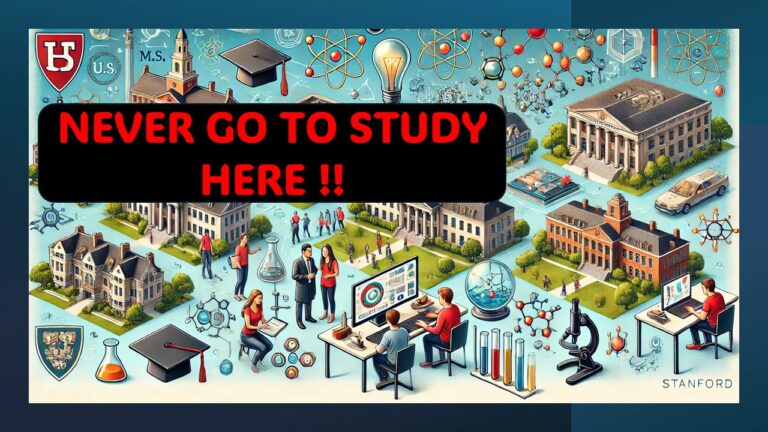Facts About Top American Colleges You Didn't Know

The United States education system distinguishes itself in aspects when compared to nations by prioritizing adaptability and creativity, along with a well rounded approach to learning notably in higher education settings.Herein lies an exploration of distinctions in practices novelly employed by leading American universities as well as assessments of the most prestigious colleges and salary differentials, among alumni.
Key Differences Between the U.S. Education System and Other Countries
Flexibility in Curriculum:
- U.S. universities offer a more flexible curriculum compared to many countries. Students can choose a wide range of courses outside their major, allowing for a well-rounded education. In contrast, many European and Asian universities have more rigid curricula, with students focusing narrowly on their chosen field.
Focus on Practical Learning:
- The U.S. education system places a strong emphasis on hands-on learning, research projects, internships, and co-op programs. For example, MIT and Stanford University incorporate real-world projects into their engineering and business courses. In many other countries, education can be more theoretical, with less emphasis on industry exposure.
Diverse Assessment Methods:
- U.S. institutions use diverse assessment methods like group projects, presentations, case studies, and continuous assessments throughout the semester. In contrast, many education systems rely heavily on end-of-term exams for evaluation.
Entrepreneurial Culture:
- The entrepreneurial mindset is deeply embedded in U.S. universities, especially those like Stanford, which is located in Silicon Valley. This focus encourages students to think beyond academics and start their own ventures, often supported by university incubators and funding.
Innovative Methods Used by Top U.S. Colleges
Experiential Learning:
- Top colleges like Harvard Business School and Wharton employ case study methods to teach students about real-world business challenges.
- Stanford’s d.school focuses on design thinking, encouraging students to approach problem-solving creatively.
Interdisciplinary Approach:
- Universities such as Columbia and UC Berkeley encourage cross-disciplinary learning, allowing students to combine studies in fields like technology, business, and social sciences.
- Project-based learning at institutions like MIT enables students to work on projects that integrate multiple fields, enhancing both practical skills and theoretical knowledge.
Cutting-Edge Research Facilities:
- Universities like Caltech and Harvard are renowned for their research facilities, offering students access to state-of-the-art labs and technology. This fosters an environment of continuous innovation and research.
Technology Integration:
- Many U.S. universities, such as Carnegie Mellon University, have integrated AI and data analytics into their curriculum, preparing students for careers in emerging fields.
Average Salaries of Graduates: U.S. vs. Other Countries
Engineers
- U.S.: The average salary for engineers in the U.S. is around $85,000 to $100,000 per year, depending on specialization and experience. Top tech hubs like Silicon Valley can offer even higher salaries.
- Other Countries:
- India: Entry-level engineers earn between ₹4 to ₹8 lakhs ($5,000 – $10,000) per year.
- Germany: The average engineer salary ranges from €45,000 to €60,000 ($50,000 – $66,000).
- Canada: Engineers earn about CAD 70,000 to CAD 90,000 ($55,000 – $70,000) per year.
MBA Graduates
- U.S.: Graduates from top business schools like Harvard and Wharton can command starting salaries of $120,000 to $150,000, with additional bonuses.
- Other Countries:
- India: MBAs from top schools like IIMs can earn ₹15 to ₹25 lakhs ($18,000 – $30,000) per year.
- UK: The average salary for MBA graduates is around £60,000 to £80,000 ($75,000 – $100,000).
- Australia: MBA graduates earn about AUD 100,000 to AUD 120,000 ($65,000 – $80,000).
How U.S. Universities Foster Quality Excellence and Innovation
- Research Funding: Universities like Harvard and Stanford receive substantial research grants, enabling groundbreaking work in fields like AI, biotechnology, and sustainable energy.
- Partnerships with Industry: Many universities collaborate with leading companies to provide students with exposure to industry trends and cutting-edge technologies.
- Centers of Excellence: Institutions such as MIT’s Media Lab and Stanford’s AI Lab are dedicated to exploring innovative technologies and fostering a culture of continuous learning and improvement.
By focusing on these areas, U.S. universities not only deliver high-quality education but also prepare students to become leaders in their fields.

Syed Saif the founder and CEO of Brainow Consulting. He has over 24 Years of experience in Quality, Excellence, Innovation, Six Sigma, Lean, and Customer Services. He is a Certified Master Black Belt, ISO Lead Auditor, High Impact Trainer, Certified Business Excellence Assessor, Certified on Innovation Business Model Canvas, and holds a PG diploma in Customer Relationship Management. Syed Saif has trained thousands of people, from students to CEOs on various improvement methodologies and self help techniques, and has worked in various industries including BPO, Telecom, IT, Insurance, Manufacturing, and Healthcare. Prior to his full-time consulting role, he served as Vice President for a Leading Insurance Company and as National Head of Quality, Innovation, and Service for Corporate and Sales Functions. See our services page for more details on what we do and how can we help you and your organization.